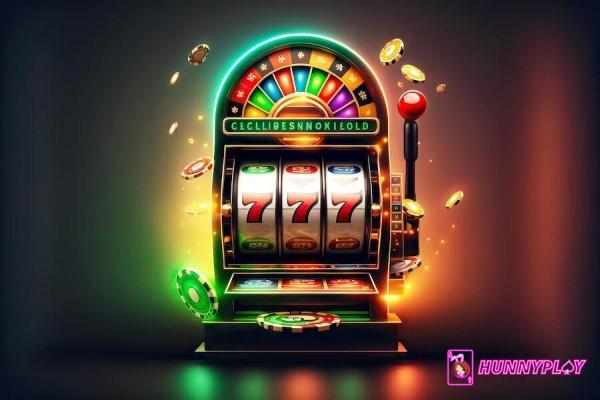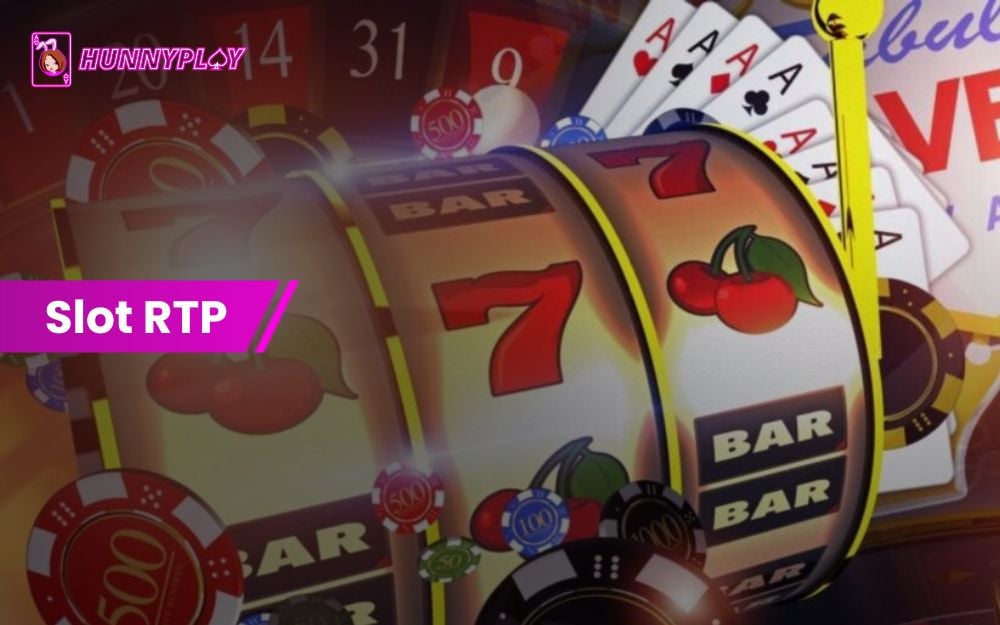RTP is a crucial concept in slot games that represents the percentage of all wagered money a slot machine will pay back to players over time. In this article, HunnyPlay will delve into what means, why it’s important for players, and how understanding it can help you choose the best slots to maximize your winnings.
Slot RTP 101
If you’ve been spinning the reels for a while or simply watching streamers play online slots, you’ve likely encountered the term RTP. Even if you’re not quite sure what it stands for, it’s clear that RTP is a crucial element in online slot games.
What is slot RTP?
RTP stands for Return to Player and represents the percentage of wagered money a slot machine pays back to players over a large number of spins. Typically expressed as a percentage, RTP provides a benchmark for expected returns.
For instance, if you play a slot with a 97% RTP, you can expect to get $97 back for every $100 wagered.
It’s crucial to understand that slot RTP is calculated based on millions of spins. In short sessions of a few hundred or thousand spins, outcomes can vary widely, which is part of the excitement of playing slots.
If a slot game consistently paid back exactly $95 after 100 spins of $1 each, it would lose its thrill and unpredictability.

Source: Internet
The different types of RTP slots
Setting the RTP for a slot machine is a complex process, made even more challenging by the intricacies of modern slot games.
When a game features numerous pay lines and special features, developers must ensure the final RTP aligns with the expected payout percentage.
Simply put, a slot is always programmed to return a specific percentage of the total money wagered over an infinite number of spins. While the distribution of RTP can vary, a slot with a 98% RTP will, over time, return 98% of all money wagered on it.
Slot providers create games with varying RTPs, typically categorized into three groups: low RTP, average RTP, and high RTP slot machines.
- Low slot RTP: These slots have an RTP between 90% and 93%. They often feature a jackpot bonus with a decent payout range. For instance, Count Duckula, a vampire-themed slot by Blueprint Gaming, is a low RTP slot.
- Average slot RTP: Slots in this category have an RTP ranging from 94% to 96%. An example is Monster Pop by Betsoft, which boasts an RTP of 94.7%.
- High slot RTP: High RTP slots have an RTP between 97% and 99%. Relax Gaming’s Book of 99 is a prime example, offering an impressive 99% RTP and a maximum win potential of 12,075 times your initial bet.
Slot RTP – Complicated math behind the scenes
Setting the slot RTP is a complex process; the more intricate the game, the more challenging it becomes.
With numerous features and multiple paylines, slot game developers must ensure that the game ultimately returns the expected payout percentage.
Simply put, slots are always programmed to return a specific percentage of the total money wagered over many spins. The distribution of a slot’s RTP can vary, which we’ll discuss shortly.
However, in the long run, a slot with a 98% RTP will return 98% of all money wagered on it over an infinite number of spins.

Setting up slot RTP is a complex combination of algorithms and engineering. (Source: Internet)
How to distinguish RTP and Variance – two seemingly similar concepts?
Slot RTP is often confused with the variance of a game, but they are distinct concepts. While closely related, they serve different purposes in understanding slot games.
We’ve already covered a slot RTP and its significance; now, let’s delve into variance.
Variance, also known as volatility, defines how a game’s RTP is realized. Low variance slot games offer frequent smaller wins, helping you extend your gameplay without quickly depleting your bankroll.
Conversely, high variance slots concentrate much of their slot RTP in bonus features, which can lead to substantial wins but fewer small to medium payouts in the base game.
This means that not all high slot RTP are necessarily easy on your bankroll. Generally, games with higher RTP are preferable to those with lower percentages.
However, choosing a high volatility slot can result in long stretches of play before you experience the expected RTP, making bankroll management crucial.
How to find the RTP of a slot?
In modern casinos, locating the slot RTP rate is straightforward. It’s typically accessible via the slot machine’s Help or Information button.
If not directly available, you can usually find it on the game provider’s website or in the slot game’s information pack.
The method for finding a slot RTP can vary depending on where you’re playing. In land-based casinos, older mechanical slot machines might not display RTP information as readily.
However, modern machines often have an Information or Help tab that provides RTP details. If this information isn’t available, you can ask the casino staff or search online for the game’s RTP.
For online slots like HunnyPlay, RTP information is almost always accessible through the slot’s Info or Help button.
Additionally, online reviews and the game provider’s website are excellent resources for finding RTP details. Given that RTP is a major selling point for slot games, this information is typically easy to locate.
Land-based vs. Online slot RTP: Which has a better one?
Players transitioning from land-based casinos to online slots often notice that online slots offer better payouts. This observation is accurate and grounded in the differences between the two gaming environments.
Online slots typically feature significantly higher RTPs compared to their land-based counterparts.
While physical slot machines generally return between 70% to 90%, rarely exceeding 92%, online slot RTP below 94%-95% are considered less appealing. Many newer online slot games boast RTPs above 96%.
This disparity isn’t due to a conspiracy by brick-and-mortar casinos. Physical venues face space constraints and higher operational costs, necessitating lower RTPs to ensure profitability from the limited number of machines on their floors.
In contrast, online casinos can host hundreds or even thousands of slot games simultaneously without spatial limitations. This allows them to offer higher slot RTP, making online slots more attractive to players seeking better returns.

In general, online casinos have higher RTPs than land-based casinos. (Source: Internet)
Truths and myths about RTP in slot games
Over time, players have formed various beliefs about how RTP works in slot games. Let’s clarify some of these misconceptions.
Myth: Online casinos can manipulate the RTP of their slots
This is not true. Online casinos, like hunnyPlay, don’t own the slots they offer; they rent them from game developers. The games are typically hosted on the developers’ servers, preventing casinos from altering core settings like slot RTP.
Some providers, like Play’n GO, offer games with multiple RTP variations, but casinos can’t arbitrarily change a game’s RTP.
Truth and Myth: RTP is completely irrelevant for a single session
This is both true and false, depending on the context. While slot RTP reflects the expected return over millions of spins, it doesn’t guarantee specific outcomes in a single session.
However, a slot with a 96% RTP will generally pay out more over time than one with an 85% RTP. Although you can win or lose on any slot, higher RTP games offer better long-term odds.
Truth: Progressive jackpots influence the real RTP of a slot
This is true in most cases. A progressive jackpot slot might advertise an RTP of 94%, but a portion of this RTP is allocated to the progressive jackpots.
Unless you hit the jackpot, the effective RTP you experience will be lower than the advertised rate.

All online casinos cannot manipulate the slot RTP. (Source: Internet)
Slot RTP – FAQs
Q: What is RTP in slot games?
A: RTP stands for “Return to Player.” Expressed as a percentage, it represents the amount of money a player can expect to win back from their bets over time.
For example, if you play a slot machine with a slot RTP of 95%, you can expect to receive $0.95 back for every $1 wagered.
Q: Where can I find RTP on slot machines?
A: In modern casinos, finding the slot RTP rate is straightforward. It’s usually available via the slot machine’s Help or Information button. If not, you can easily locate it on the game provider’s website or in the slot game’s information pack.
Q: Is high or low RTP better?
A: Slots with higher RTPs offer better odds of winning and a smaller House Edge.
A slot with an RTP of 97% returns more to players over time than one with an RTP of 90%. While higher RTPs are generally more favorable, they don’t guarantee consistent wins.
Q: Can I predict slot machines?
A: No, you cannot predict slot machines.
Each spin is determined by a random number generator (RNG), ensuring that every outcome is independent and unpredictable. There is no way to forecast how each spin will differ from the previous one.

Slot machine results are unpredictable. (Source: Internet)
Conclusion
RTP – Return to Player – indicates how much a slot game returns to players over time. Understanding slot RTP is crucial for maximizing your gaming experience.
Higher RTP slots offer better long-term odds, though they don’t guarantee consistent wins. Whether playing online or at a land-based casino, knowing the RTP can help you make informed decisions.
Discover more about RTP and find the best slots to play at HunnyPlay. Join now and enhance your gaming strategy with expert insights!




















